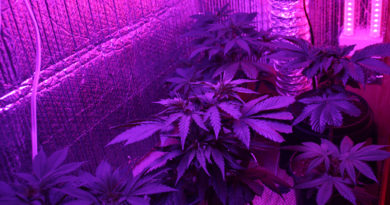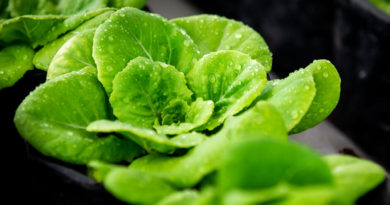Angiosperms & Gymnosperms – A-Grade Hydroponics
Posted on by ALEX THORNBLASTER

By Alex Thornton
Angiosperms & gymnosperms are the two major groups of seed plants shown by the suffix sperm which means “seed” in Latin. Gymnosperms first appeared on earth 359-299 million years ago & ruled the landscape during the Mesozoic era 251-65 million years ago, by the end of this era angiosperms had taken over & still remain the most successful plant group.
There are around 1,000 species of gymnosperms ordered into 4 divisions: Coniferophyta, Cycadophyta, Ginkgophyta, and Gnetophyta. Plants in the Gnetophyta division are most firmly identified with angiosperms since they have xylem tissue. The Latin prefix gymnos signifies “exposed” and alludes to the seeds of the plants which are not encased in a natural product like angiosperm seeds are.
Angiosperms number more than 260,000 species, second to insects as far as their diversity. The species are separated into monocotyledons (monocots) that have a solitary cotyledon and dicotyledons (dicots) that contain two cotyledons. Monocots and dicots are distinguished, in addition to other things by taking a look at their leaves. Monocots have parallel veins in their leaves while the veins in dicot leaves are more branched. Their root systems are also unique. Monocots have a network root system and dicots have a fundamental taproot with lateral roots leaving it.
|
Angiosperms |
Gymnosperms |
|
|
Seeds |
Yes, usually enclosed in an ovary (fruit) |
Yes, not enclosed, usually found on cones, scales, or leaves |
|
Leaves |
Flat |
Needle or scale like |
|
Has Flowers? |
Yes |
No |
|
Reproductive System |
In the flowers, unisexual or bisexual |
Unisexual system in the cones |
|
Type of Wood |
Hardwood |
Softwood |
|
Uses |
Food, medicines, clothing |
Lumber, paper |
|
Ploidy (number of sets of chromosomes) |
Triploid |
|
|
Perennial? |
No |
Yes |
|
Life Cycle |
Seasonal, plant dies in autumn |
Evergreen |
|
Pollination Mechanism |
Mostly by animals |
Mostly by the wind |
In conclusion gymnosperms are just as important as angiosperms in our daily lives, angiosperms may make up the majority of plants but gymnosperms are essential for the construction of our homes, the paper we write on and much more. Majority of plants we grow at home as gardeners will be angiosperms but rarely we may grow gymnosperms.




